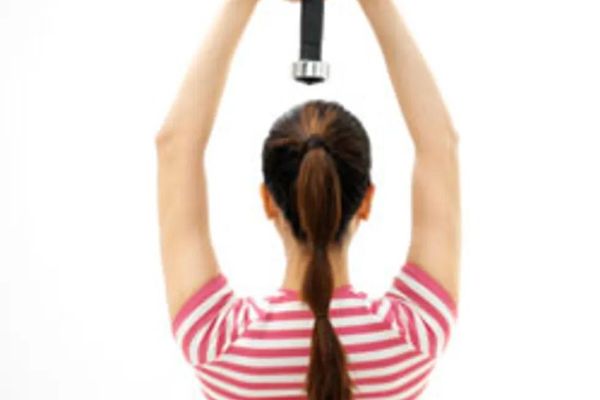Want to get—and stay—healthy?
A healthy lifestyle is more than just eating right, getting aerobic activity and logging plenty of restorative sleep.
It should also include strength training.
Strength training's benefits reach way beyond aesthetics: Sure, it can rev up your metabolism, reduce body fat and, in turn, increase your body's lean mass.
But strength training can also fight many effects of aging—among them, bone loss. Strength training can help prevent osteoporosis. That becomes more important with each passing year, when your bones lose calcium and other minerals and you lose more bone than you form, especially after menopause.
Another advantage of lifting weights? You're helping your body maintain its strength and reducing your risk of injury. Plus, you increase your flexibility, muscle mass and joint mobility.
Lifting weights can even make you mentally sharper. Researchers have found that it boosts cognitive functioning in older adults.
Yet, although many studies have pointed to strength training's importance as being equal to aerobic activity, so many people—especially women—are hesitant to pick up the weights.
Call it misinformation, or misplaced knowledge, but these weight-lifting myths persist:
- I'll build big, bulky muscles. Maybe you have images of grunting men at the gym with bulging muscles. But that's not physiologically possible, says a study in the British Journal of Sports Medicine, whose researchers state that this common fear "should not dissuade women from engaging in this mode of exercise." What you'll get instead of bulky muscles? A lean, tight, well-defined body.
- I'll get injured. Like any form of exercise, if you overdo it or do it without proper training and form, you can get injured. But done right—that means easing into it, warming up, then cooling down and stretching afterward—your body will feel just right. If you happen to overdo it or tweak something, remember the benefits of massage to help ease sore muscles. No need to book an outside massage session—just pick up a product like this Hot/Cold Therapy Massager from Wahl for pain relief at home. You'll get it all: heat to increase blood flow and loosen tight muscles; cold to help ease muscle tension and soreness.
- Cardio will burn more fat than weight lifting. Many people think they need to ramp up their cardio to increase their metabolism and lose weight. But that's just not true: Muscle tissue is more metabolically active than fat, and lifting weights can increase the baseline number of your daily calorie burn.
- Since muscle weighs more than fat, I'll gain weight. Well, maybe a little. But that weight will be lean mass, which will make you look smaller and more compact, not bigger and fatter.
- Weight lifting can cause high blood pressure. People with uncontrolled blood pressure (higher than 180/110 mmHg) are advised against lifting weights. But, in the long term weight lifting can actually help lower your blood pressure and that "outweighs the risk of a temporary spike for most people," according to the Mayo Clinic. As always, check with your health care provider before beginning any new exercise.
Convinced that it's time to pick up the weights? Government guidelines call for two or more days a week of muscle-strengthening activities added to your regular aerobic activity. Work all your major muscle groups, which include the legs, hips, back, chest, abdomen, shoulders and arms.







